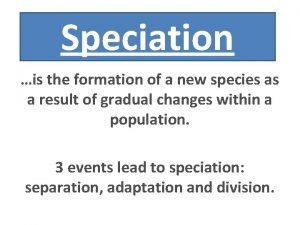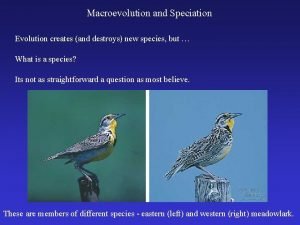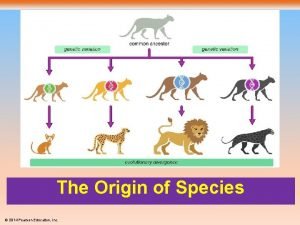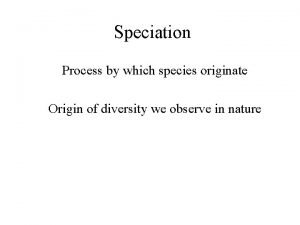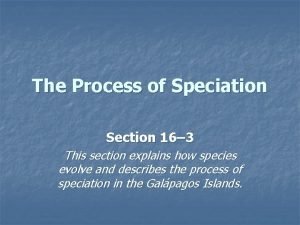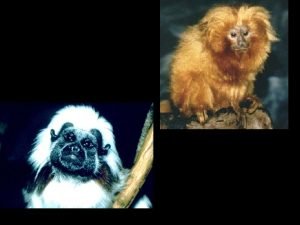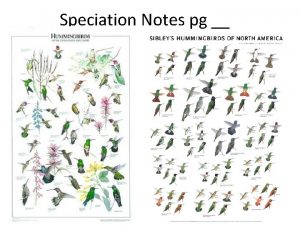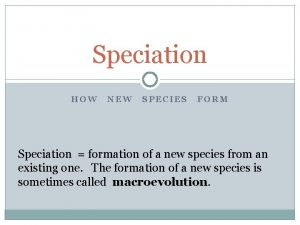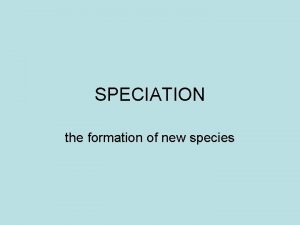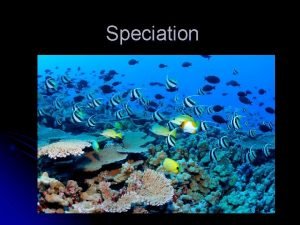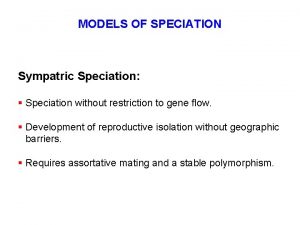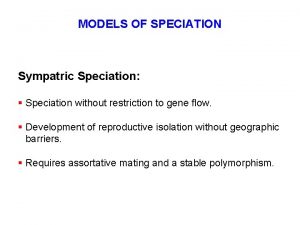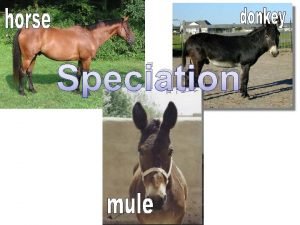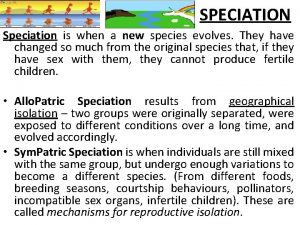Speciation is the formation of a new species












- Slides: 12

Speciation …is the formation of a new species as a result of gradual changes within a population. 3 events lead to speciation: separation, adaptation and division.


1. Separation • Part of a population becomes separated from the rest. • They may be separated by a Geographical isolation like a canyon, river, a mountain range, or being on an island.

Other kinds of separation are… • Ecological isolation – Species are in the same area but live in different habitats. • Temporal isolation – Species are in same area but are active at different times of the day or reproduce in different seasons.


2. Adaptation • After the groups are separated, each group continues to be affected by their environment: –Different traits can be favorable or unfavorable in different environments. –Over many generations, different traits may spread through each population.


3. Division • The 2 separated populations can become very different from each other. • With time the members of the 2 populations may be unable to interbreed successfully. http: //www. floridapanthernet. org/index. php/handbook/history/range_of_the_florida_panther/ http: //news. discovery. com/big-cats/


Fig. 23. 6 Four species of leopard frogs: differ in their mating calls.

These squirrels live on opposite sides of the Grand Canyon.

The Channel Island Fox The California Grey Fox
 Speciation or the formation of new species is
Speciation or the formation of new species is Sympatric speciation vs allopatric speciation
Sympatric speciation vs allopatric speciation Keystone species plants
Keystone species plants Formation initiale vs formation continue
Formation initiale vs formation continue Describe the conditions under which new species may arise.
Describe the conditions under which new species may arise. Why does new guinea have more species of birds than bali?
Why does new guinea have more species of birds than bali? The process by which new species originate
The process by which new species originate Section 16-3 the process of speciation
Section 16-3 the process of speciation Ecological speciation
Ecological speciation Taxonomic species concept
Taxonomic species concept Allopatric speciation example
Allopatric speciation example Factors affecting gene frequency slideshare
Factors affecting gene frequency slideshare Cladogram for dogs
Cladogram for dogs
